Archery - The Right Bow, Focused Breathing and Mind
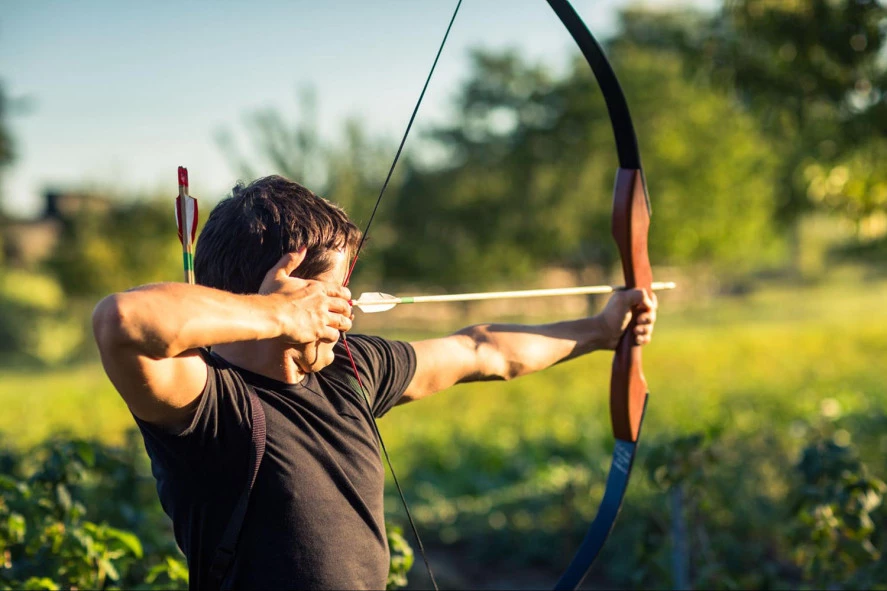
Contents
What Is a Bow Made Of?
The bow is made up of two parts - a pair of elastic limbs (with a riser in the middle) and a string. The central part of the bow is typically thicker to allow for a firm grip. Limbs have nocks at the end which are used to attach the bowstring to the limbs.
For centuries, bows have been made from woods such as birch, hazel, maple, ash, walnut, or bamboo.Today, however, the bows are reinforced with fiberglass or compositions of materials - for example, resin reinforced with strong fibers.
Archers of different cultures made bowstrings from animal sinew, rawhide, flax or hemp. Modern bowstrings are made of Dacron (polyester material, also used for sports sailing boats) and Kevlar fibers, and they are extremely strong and lightweight. We do not recommend using such bowstrings for wooden bows. The force of the bowstring may break the limbs of the bow.
If you maintain your bowstring well, it will serve you for a long time. Bowstring waxes prevent fraying, abrasion, grease formation and it will keep moisture away. And you can get them for just a few bucks in our store!
Do You Know Your Draw Length?
If you don’t, you can’t choose the right bow. Before buying a bow, you need to consider the following:
1. Are you right-handed or left-handed?
As a right-handed person, you hold the bow in your left hand and draw the bowstring with your right. As a left-handed person, it's the other way around. Double check your bow to make sure you don't get the wrong one.
2. What size bow do you need?
What matters is the draw length of the bowstring (which also determines the length of the arrows, but more about that later), especially if you are getting a composite bow or a bow with limited length of pull. This factor is not so important for longbows.
The higher the draw length, the longer bow you need. The length of the bow is measured in inches (1 inch = 2.54 cm).
How to measure your draw length? To measure your draw length, stand straight, stretching your arm forward with your fingers forward. Using a measuring tape, measure the distance from your hand to your chin. The distance is your maximum draw length.
Check our bow length / draw length table below:
| Draw length (in inches) | Bow length (in inches) |
|---|---|
| 14–16 | 48 |
| 17–20 | 54 |
| 22–22 | 58 |
| 22–24 | 62 |
| 24–26 | 64–66 |
| 26–28 | 66–68 |
| 28–30 | 68–70 |
| 31 and more | 70–72 |
3. How much draw weight can you handle?
Draw weight is measured in pounds (1 pound = 0.453 kg). A beginner should always choose a bow that does not require too much strength to draw. It is hard to shoot an arrow if you cannot pull the bowstring!
You can check some approximate values of draw weight by category:
- children: 10–20 lb
- 18–20-year-olds: 20-28 lb
- women: 28-35 lb
- men: over 35 lb
Different Types of Bows
There are bows that will help you win a medal in the Olympic Games, and there are bows that will make you hit a moving boar in the woods. Whatever your motivation for buying a bow, you should know the difference between bow types.
English Longbows
English longbows are generally attributed to the Welsh, but they were used both by the English and the Welsh. They are made of one piece and are used for fast shooting without too much hesitation and aiming. An arrow shot from an English longbow can travel at a speed of 330 kph (205 mph). We can recommend it to beginners as well as to skilled marksmen.
Recurve Bows
Recurve bows are bows with limbs that curve away from the archer when unstrung. They are used by archers at sports events. You can either shoot from the bow as it is using your instincts, or you can use bow sights (if you are interested in bow sights, read more about them in our article). They are used in the Olympic Games.
Recurve bows consist of a grip and two limbs. The ends of the limbs are vertical, which makes shooting easier and more accurate.
Reflex Bows
Reflex bows are typically lighter and shorter than longbows. Reflex bows allow you to shoot faster, but with less accuracy. Reflex bows have the ends of limbs curved towards the target.
The bows are made of several types of wood or composite materials. They are suitable both for recreational and professional archers.
Compound Bows
Compound bows are perfect for hunting. However, hunting is forbidden in many countries. It is allowed in France, Italy or Hungary - you can go hunt with a bow in those countries. Moreover, compound bow is great for archery competitions.
Compound bows work as a block and tackle system. The outer wheels rotate and reduce the draw weight. This system makes it easier for the archers to shoot and can be used by physically disabled athletes.
Children’s Bows
Teach your children to focus and clear their mind with archery! Children’s bows are ideal for little archers who need to get a feel for archery first. In your online store, we have dedicated a separate category to children's bows.
Now you are hopefully more confident about how to choose a bow. But to achieve the accuracy of Clint Barton from the Avengers or Robin Hood, don't forget to get quality archery accessories. It is hard to aim without the target!
Arrows - Dangerous Projectiles
To call yourself an archer, there's only one thing left to do - get a set of arrows and a quiver.
Each arrow consists of a shaft, a sharp point and a nock (groove for the bowstring). Characteristic fletching or feathers provide stability and accuracy in flight.
And below are the types of arrows used today for competitions and hunting in Europe, Canada and the USA:
- wood arrows - good with English longbows, but not resistant to moisture;
- aluminium arrows - fast and accurate, relatively light weight;
- carbon arrows - perfect for compound and recurve bows, they have excellent stability and durability.
Arrow fletching is not suitable as a tool to coat meat for your BBQ. Another thing worth mentioning is that you should never aim at a person, not even for fun. And here is some additional advice for all archers. You can check it out here!

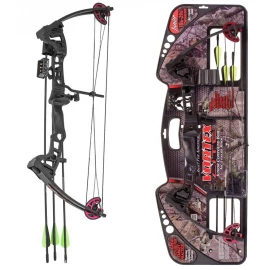
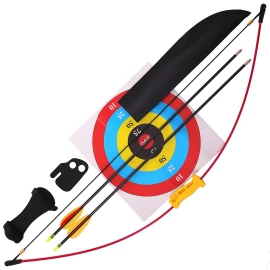
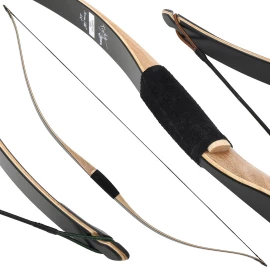
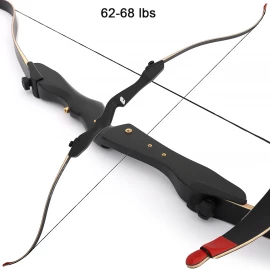
Comments